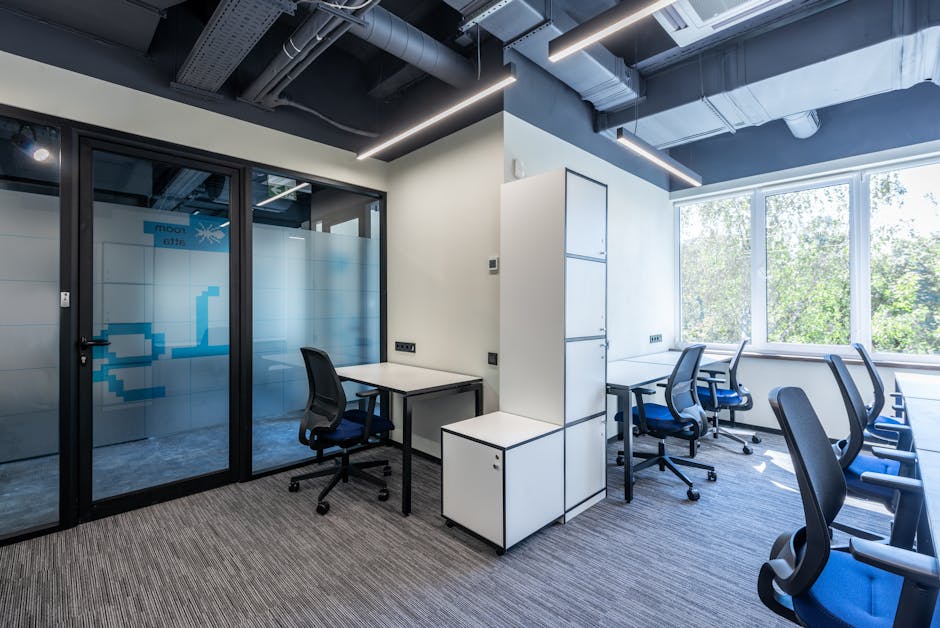Creating Privacy in the Modern Workplace: Strategies for Personal Space and Productivity
“In the wake of the pandemic, employees are seeking more private working environments. This article explores innovative strategies for creating personal space in open offices, balancing the need for collaboration with privacy, and adapting workplace design to meet evolving employee expectations. ”

The Shift Towards Private Workspaces in Modern Offices
The COVID-19 pandemic has dramatically altered our perception of office spaces and privacy. Where once open-plan offices were the norm, there's now a growing demand for more private working environments. This shift isn't just about personal preference; it's become a matter of health, safety, and productivity.

According to recent studies, approximately 43% of employees now desire at least partially private office space. This change in preference stems from concerns about health and safety, as well as the realization that personal space can significantly impact productivity and wellbeing.
The Benefits of Private Office Space
Private office spaces offer several advantages that contribute to a more effective work environment:
- Increased Focus: Reduced distractions lead to improved concentration and productivity.
- Enhanced Confidentiality: Sensitive conversations and projects can be handled more discreetly.
- Personalization: Employees can customize their space to suit their working style.
- Improved Health and Safety: Reduced exposure to potential health risks in shared spaces.
However, it's crucial to strike a balance between privacy and collaboration. While private offices provide personal space, they shouldn't come at the cost of teamwork and communication.
Strategies for Creating Privacy in Open Offices
Even if your office layout is predominantly open, there are several ways to create more private working environments:
1. Implement Physical Dividers
Use bookshelves, plants, or acoustic panels to create visual and auditory barriers between workstations. These can help define personal spaces without completely isolating employees.
2. Designate Quiet Zones
Create areas specifically for focused work, where talking and phone calls are discouraged. This provides employees with a retreat for tasks requiring concentration.
3. Utilize Flexible Furniture
Invest in modular furniture that can be easily rearranged to create temporary private spaces when needed. This allows for adaptability in the office layout.

4. Incorporate Sound Masking Technology
Use white noise or sound masking systems to reduce the impact of background conversations and improve speech privacy.
5. Offer Bookable Private Spaces
Provide small, private rooms or booths that employees can reserve for confidential calls or focused work sessions.
Balancing Privacy and Collaboration
While privacy is important, it's equally crucial to maintain opportunities for collaboration and social interaction. Here are some ways to achieve this balance:
- Create Collaborative Zones: Designate specific areas for team meetings and brainstorming sessions.
- Implement a hybrid work model: Allow employees to work from home part-time, giving them control over their work environment.
- Design Multi-Purpose Spaces: Create areas that can be easily transformed from private to collaborative spaces as needed.
The Role of Technology in Creating Private Workspaces
Technology plays a crucial role in facilitating privacy and efficient space utilization in modern offices:
- Desk Booking Systems: Allow employees to reserve private workspaces in advance.
- Noise-Cancelling Headphones: Provide employees with tools to create their own audio privacy.
- Smart Glass: Install electronically tintable glass for meeting rooms and offices to switch between transparency and privacy.

Designing for Employee Wellbeing
When creating more private office spaces, it's essential to consider overall employee wellbeing:
- Natural Light: Ensure private spaces have access to natural light, which is crucial for mental health and productivity.
- Ergonomic Furniture: Invest in comfortable, adjustable furniture to support employee health in private workspaces.
- Biophilic Design: Incorporate natural elements like plants and natural materials to create a calming environment.
The Future of Office Design
As we move forward, office design will likely continue to evolve, focusing on flexibility and employee needs. The key is to create environments that can adapt to changing requirements while supporting both privacy and collaboration.
By implementing these strategies and remaining open to employee feedback, organizations can create workspaces that enhance productivity, promote wellbeing, and meet the diverse needs of their workforce. Remember, the goal is not just to provide private spaces, but to foster an environment where employees feel comfortable, safe, and empowered to do their best work.
In conclusion, the shift towards more private working environments is not just a trend, but a necessary evolution in workplace design. By building strong employer-employee relationships and prioritizing employee needs, companies can create offices that are not only more private but also more productive and satisfying for everyone involved.